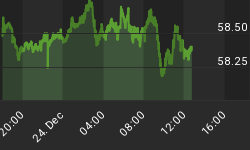We expect the dollar to continue retreating across the board in this busy day of US economic releases, where traders will opt a from a wide array data.
At 8:30 am, weekly jobless claims are expected to have edged up to 320K last week from 315K, dragging the 4-week average to 316K from 326K--a positive development for US labor markets. Weekly claims have stabilized ever since soaring to 358K in the week of thanksgiving, raising the holiday factor as a cause in the run-up that week. But we have yet to further assess the jobs data in the aftermath of the hiring strength, which has been primarily related to the Holiday-shopping season.
Due at 10:00 am are US existing home sales expected to have slipped by a marginal 0.8% in November following a 0.5% rise in October. The October rise followed two consecutive monthly increases on a month to month basis, but the year-on-year changes show double digit percentage declines in the low teens. Although Wednesday's report on US new homes sales showed an unexpectedly strong increase in November, it is possible that today's report on existing home sales will show a weaker performance because existing home sales represent the final closing of home contracts as opposed to initial home contracts in the case of new homes sales. We have already seen fresh evidence of housing market deterioration in continued declines in mortgage applications, the Case-Shiller home prices index and the Housing Market Index.
Also due at 10:00 am is the all-important Chicago purchasing managers index expected to have edged up to 50.2 in December after the high-profile decline below 50 in November correctly foretold a similar decline in the national ISM survey on manufacturing the subsequent day. Another figure below 50 today can have negative implications for the dollar especially if the other accompanying data (existing home sales and consumer confidence) fail to show any notable strengthening.
The Conference Board's consumer confidence index is also due at 10:00 am, expected to have slipped to 102.0 in December from 102.9 in November. The job market perceptions component of the survey should also be scrutinized, especially in light of the declines in recent months. The November index of perceptions of available jobs fell to 3.4% from 3.8% in October and 5.3% in September.
USDJPY shows signs of peaking
Japan's industrial production rose 0.7% in November, hitting a record high of 108.6. The report is released one day after a newspaper report fueled speculation that the Bank of Japan is mulling a rate hike at its January meeting. Although today's industrial production report will be the last batch of economic data prior to the January 15th policy board meeting, the central bank may remain on hold due to prolonged sluggishness in consumer spending and stubbornly benign inflation. We think it may be plausible that the policy makers are helping to circulate rumors of a January rate hike in order to slow the pace of the emerging yen carry trades that are speeding the decline of the Japanese currency. BoJ governor Fukui has already expressed concerns of the ensuing carry trades whose impact in weakening the yen risks into sharp jumps in the currency when these traders begin to unwind.
We do not expect USDJPY to make any renewed moves above the 119.20s as the emerging speculation of a BoJ tightening will serve in capping the pair. Today's US data could potentially drag the pair towards the initial support of 118.50, followed by 118.25-30. The doji shown in the weekly candle chart suggests indecision after three strong weeks, portending possible weakness in the coming week towards the 118 figure.
EURUSD eyes 1.32
European Central Bank governing council member Yves Mersch maintained the bank's rhetoric that interest rates remain low and accommodative and plentiful liquidity posing inflation risks. We deem today's round of US data to be key catalyst in propping the EURUSD rate towards the 1.3170s, after which we could see extended gains stabilizing just under 1.3200. Support seen holding at 1.3120, backed by 1.3090.
USDCAD to post further declines
USDCAD is falling off its 1.1620s in line with yesterday's projections, with 1.1575-80 as the initial support, followed by 1.1555-60. Friday could allow for prolonged declines towards 1.1520.
















